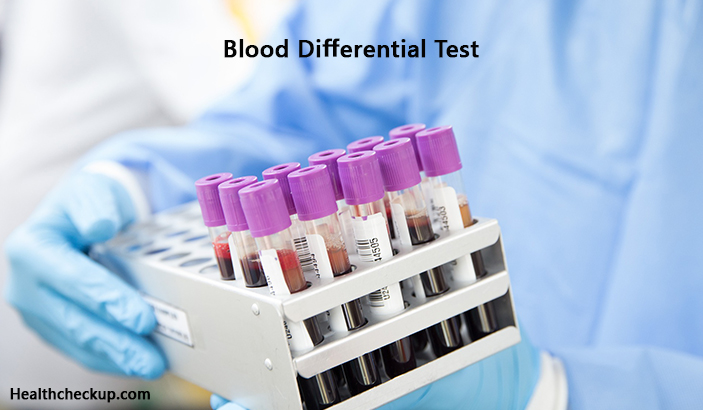A blood differential test is used to measure the quantity of each kind of white blood cell (WBC) present in the body. There are 5 different kinds of white blood cells in the body responsible for immunity and other essential works. This test is also known as Complete blood count (CBC) with differential, Leukocyte differential count, Differential, and White blood cell differential count.
What Is A Blood Differential Test?
This test detects immature or abnormal cells. Besides, it can even diagnose inflammation, infection, immunity disorder, and leukemia. The White blood cell differential test is often part of a complete blood count (CBC).
Why Is The Blood Differential Test Done?
A doctor may recommend this test as part of a regular health check-up. There is a small difference between CBC and blood differential test as the former is a wider test in comparison to the latter. A CBC measures white blood cells, red blood cells, platelets, hemoglobin, and hematocrit while blood differential test focuses on WBC. A GP may even recommend a CBC with blood differential tests if they doubt other symptoms such as a bone marrow disorder, autoimmune disease, and others.
How Is A Blood Differential Test Performed?
The doctor checks the white blood cell levels by testing a blood sample. Blood is drawn from hand or arm using a small needle and the test needs no special preparation. This drawn blood is placed on a glass which is then stained using a dye that aids to differentiate the WBC types. The number of every WBC type is counted either manually or using an automated blood count equipment that uses a laser, electrical, or photodetection method. The latter is usually supposed to be exact.
If you are taking any medications let the lab technician know as few medicines may alter the results. This test usually doesn’t have any complications associated with it save for the small pain and little bit of blood spill while drawing blood.
Normal Results Of Blood Differential Test
Although lab results could differ, the American Academy of Pediatric Dentistry earmarked white blood cells percentage in healthy persons as below;
54 to 62 percent neutrophils
25 to 30 percent lymphocytes
0 to 9 percent monocytes
1 to 3 percent eosinophils
1 percent basophils
What Does An Abnormal Blood Differential Test Mean?
An abnormal upsurge in one type of white blood cell can lead to a decrease in another type. Let us look into what each type of abnormality in the test says;
An increased neutrophils percentage in the blood can denote that a person has;
- Neutrophilia, a white blood cell illness that may be the outcome of steroids, an infection, smoking, or severe exercising
- An acute infection, majorly a bacterial infection
- Severe stress
- Inflammation, like rheumatoid arthritis or inflammatory bowel disease
- Pregnancy
- Tissue damage due to trauma
- Prolonged leukemia
A decreased neutrophils percentage in the blood can signal;
- Neutropenia, a white blood cell ailment that could be due to lack of neutrophil manufacturing in the bone marrow
- Aplastic anemia, a reduction in the number of blood cells made by a bone marrow
- A widespread or viral or bacterial infection
- A recent radiation therapy or chemotherapy treatments
An increased lymphocytes percentage in the blood may be because of;
- Lymphoma, a type of white blood cell cancer that begins in the lymph nodes
- A prolonged bacterial infection
- Multiple myeloma, a cancer of the cells in the bone marrow
- Hepatitis
- Viral infections such as mononucleosis, measles, or mumps
- Lymphocytic leukemia
A decreased lymphocytes percentage in the blood can be the outcome of;
- Bone marrow injury out of radiation or chemotherapy treatments
- HIV, hepatitis infection, or tuberculosis
- Leukemia
- Severe infections such as sepsis
- An autoimmune disorder like rheumatoid arthritis or lupus
A heightened monocytes percentage in the blood can be the outcome of;
- Chronic inflammatory ailment, such as inflammatory bowel disease
- A viral or parasitic infection
- A bacterial infection in the heart
- A collagen vascular ailment such as vasculitis, rheumatoid arthritis, or lupus
- A few forms of leukemia
An increased eosinophils percentage in the blood can mean;
- Eosinophilia-an outcome due to allergic disorders, tumors, gastrointestinal (GI) disorders, or parasites
- Allergic reactions
- Skin inflammation such as dermatitis or eczema
- Parasitic infections
- Inflammatory disorders such as celiac disease or inflammatory bowel disease
- Certain cancers
An increased basophils percentage in the blood may be due to;
- A severe food allergy
- Leukemia
- Inflammation
Although a blood differential test is simple and may look normal it says a lot about a person’s health.

Sudheendra is a passionate blogger for 8 years and holds a Degree in Journalism & Mass Communications. His writings particularly focus on health, medicine, diet & lifestyle. For him, everything that interlinks and relates to health & medical world entices him. His write-ups aim at educating people not by just giving facts but by infusing human touch.








